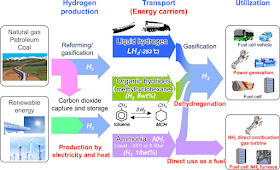The bonds are considered to be nonpolar covalent (as all C-H bonds are incidentally) due to the low electronegativity difference between carbon (2.55) and hydrogen (2.20). This generally distributes charge around the molecule pretty evenly. Furthermore, the molecule has a linear structure due to the relatively rigid triple bond between the two carbons (this is because there are multiple kinds of bonds involved which present rotation, specifically the combination between sigma and pi bonds). A triple bond contains one sigma bond and two pi bonds.
The kind of linear structure present in C2H2 is similar to the kind of bond formed by H2 (i.e. a linear covalent bond) or that formed by CO2. Overall the presence of many nonpolar bonds makes the whole molecule nonpolar. It is one of the simpliest unsaturated hydrocarbons (saturation => hydrocarbon molecule with only single bonds | unsaturated => hydrocarbon molecule has at least one double or triple bond).
 |
| C2H2 Ball and Stick Model. Created with MolView. |
Due to its relatively low number of total electrons and nonpolar character, the molecule is found as a gas due to the presence of quite limited London Dispersion Forces and very weak intramolecular forces. However, the molecule is unstable in its pure form and thereby difficult to find in nature. Nevertheless, scientists have identified multiple types of bacteria that are able to digest C2H2 as a food source. Within different research fields acetylene (C2H2) is generally utilized as a chemical building block and as a fuel source since it can participate in a wide variety of reactions. [1]
[1] https://www.britannica.com/science/acetylene



































